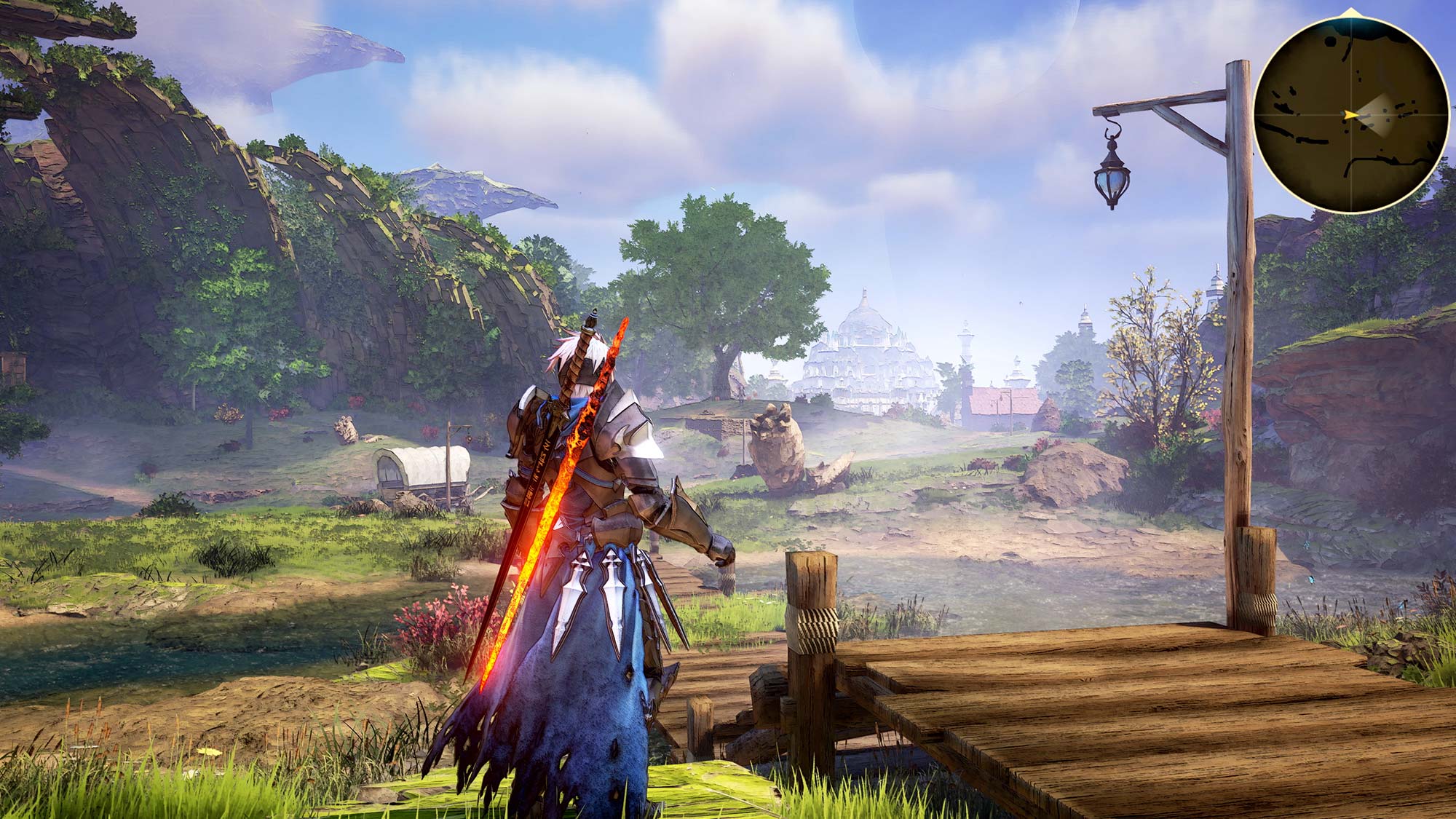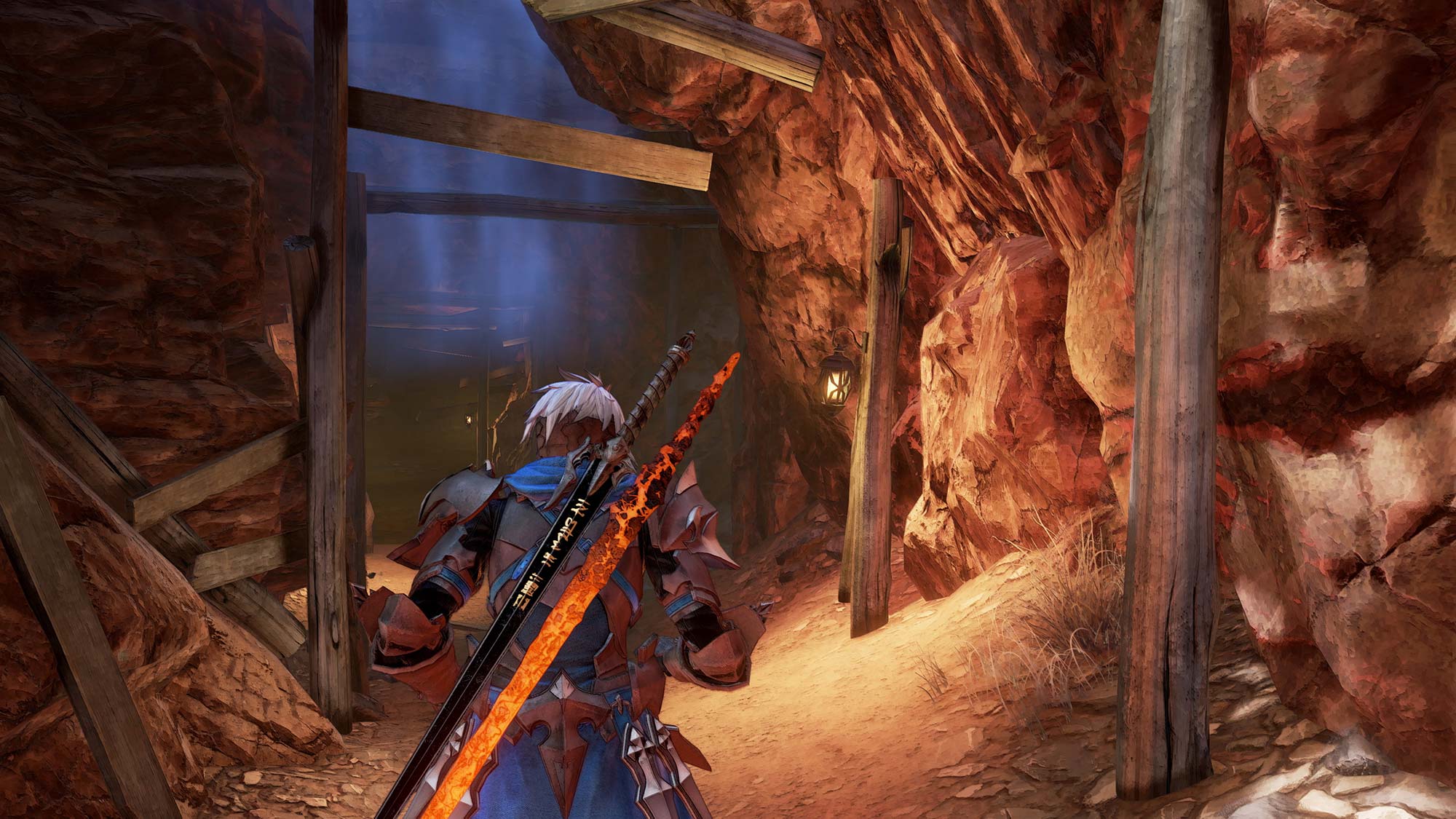Tom's Guide Verdict
Tales of Arise doesn’t exactly forge new ground in the JRPG genre, but a fast-paced battle system and a well-told story make it easy to pick up, and hard to put down.
Pros
- +
Fun, fast-paced combat
- +
Heartfelt story
- +
Charming cast of characters
- +
Catchy soundtrack
Cons
- -
Tales formula feels a little rote
- -
Staid character design
Why you can trust Tom's Guide
Platforms: PC, PS4, PS5 (reviewed), Xbox One, Xbox Series X/S
Price: $60
Release Date: September 10, 2021
Genre: Japanese RPG
Tales of Arise is the latest entry in Bandai Namco’s long-running Tales series of Japanese RPGs. If that means anything to you, then you probably already know whether or not you want the game. The Tales series is easily the most consistent JRPG franchise from a major publisher, from the inventive Tales of Phantasia back in 1995, up to the refined Tales of Berseria in 2017. Just like its predecessors, Tales of Arise employs a familiar formula to deliver pure JRPG comfort food. And, just like its predecessors, Tales of Arise is excellent.
If you’ve played a Tales game before, then you can practically sing along at this point: Tales of Arise presents a demanding real-time combat system, a charming cast of characters with a sharp script, and a story that starts off simple, but winds its way into some tricky moral territory. Throw in some attractive anime graphics and a killer soundtrack, and Tales of Arise is arguably the first great JRPG of the new console generation. Series fans should feel right at home, but even newcomers should consider picking it up, if only to see what they’ve been missing all this time.
Read on for our full Tales of Arise review — and once you've completed the game, check out our suggestions for 10 games to play after Tales of Arise.
Tales of Arise review: Gameplay
Tales of Arise casts you as Alphen: an amnesiac swordsman who sets out on a globetrotting quest along with five other attractive young misfits. If you’ve ever played a JRPG before, you can probably already guess the structure of the game. You’ll gather a party, journey from town to town, fight a ton of low-stakes battles along the way, level up your skills, upgrade your equipment, discover a bunch of side quests and sit through a barrage of story cutscenes.

What sets Tales of Arise apart from most other JRPGs is its real-time combat system. When you encounter a group of enemies, you and three party members enter a dedicated battle screen. But rather than taking turns to dish out damage, you’ll run around the battlefield, chaining together regular and special attacks, as well as dodging enemy strikes. The big difference this time around is that your restorative healing Artes are tied to a resource called Cure Points, which don't automatically recharge between battles. This provides both a carrot and stick for exploration. You don’t want to run out of CP in the middle of a dungeon, but you don’t want to hoard them, either — particularly since you can use them to unlock optional areas. It’s a smart balance, and gives Tales of Arise both tactical and strategic depth.

While real-time combat systems are a Tales series staple, Tales of Arise offers a few innovations. First and foremost, the game is very difficult, even on default settings. Most attacks deal paltry damage, meaning your only hope of defeating enemies is to stagger enemies and chain together as many techniques as possible. Tales of Arise gives you ample opportunities to do this, between regular attacks, specialized Artes, unique character abilities and devastating dual-character strikes. Once you get the hang of combat, ordinary encounters aren’t too troublesome, but the game’s enormous bosses are always a challenge.

I’m of two minds about Arise’s combat system. Unlike in previous Tales games, button-mashing won’t get you through even the most basic battles, which can make combat feel exhausting after a while. But it also means that combat never feels trivial — even if the rewards do. As you level up and fight the same enemy types over and over, the amount of experience you earn from them will decrease. This means that level-grinding before tough bosses is basically impossible, and your only choice is to play the game more efficiently. While Tales of Arise is hardly an easygoing experience, it does feel rewarding to see both your party members and your own skills grow over time.

Beyond that, Tales of Arise offers the standard suite of JRPG activities. You’ll get stronger as you gain experience and level up, and you can further customize your abilities via unlockable skill trees. You’ll craft new weapons and buy new armor; you’ll cook meals to temporarily boost your stats; you’ll hunt down optional bosses to improve your healing abilities; you’ll solve simple puzzles to make your way through the game’s big, explorable maps. Everything basically works, although if you were hoping for a significant evolution of the Tales formula, you won’t find one here.
Tales of Arise review: Story
In Tales of Arise, the spacefaring Renans have enslaved the earthbound Dahnans for 300 years. You play as Alphen: a Dahnan slave who’s lost his memories, but is nonetheless ready to take up arms against his Renan oppressors. He teams up with a rogue Renan named Shionne, who has her own reasons to overthrow the five tyrannical Lords who control Dahna. As they travel from realm to realm, they pick up a party of like-minded conspirators, and learn that the relationship between Dahnans and Renans is not as black-and-white as they initially believed.

Like most Tales game, Tales of Arise starts with a typical fantasy setup (“travel the world, defeat the evil Lords”), but isn’t content to stay there. Defeating the Lords gives Alphen and Shionne a good excuse to explore Arise’s varied world, from the fire-flecked wastelands of Calaglia, to the verdant grasslands of Menancia. But it’s not long before the two realize that not even defeating the Lords can undo three centuries’ worth of cultural damage. Alphen and Shionne’s backstories complicate matters further, resulting in a three-dimensional story with some rewarding twists and turns.

The building blocks of the plot are all pretty familiar — characters doubt themselves, triumph over adversity, fall in love, betray each other, hide their motivations, banter to build up camaraderie, and so forth. But the core party members are delightful enough to make these familiar tropes feel fresh. The upstanding Alphen and the conflicted Shionne have a natural chemistry, and they interact naturally with the bright-eyed mage Rinwell, the overeager martial artist Law, the motherly knight Kisara and the aloof healer Dohalim.
Tales of Arise review: Visuals and sound
Graphically speaking, Tales of Arise demonstrates that we may have reached a point of diminishing returns with anime-inspired games. It’s not that Tales of Arise looks bad — it actually looks quite good — but it doesn’t look radically different from Tales of Berseria, or other JRPGs from the last console generation.

The animations are smooth and the level design is varied, but the central cast looks unusually staid, for a Tales party. Their costumes lean heavily on blues, whites and grays, with pretty conventional faces and hairstyles.

The soundtrack, on the other hand, is a thing of beauty. Composer Motoi Sakuraba (Dark Souls, Mario Golf: Super Rush) has created what is probably the catchiest battle theme in Tales history, and the rest of the tracks sound similarly inspired. The voice-acting is also excellent, particularly Alphen and Shionne — although, oddly, Bandai Namco has not yet revealed their English voice actors.
Tales of Arise review: Verdict
Tales of Arise doesn’t rewrite any genre conventions, but it doesn’t really need to. It’s a substantial adventure with a demanding battle system and a riveting story, just like previous entries in the series. If you have ever played a Tales game before, you know exactly what you’re signing up for.
And yet, even if you haven’t played a Tales game before, there’s a lot to like about Arise. Even if the cutscenes drag on for a bit sometimes, the combat will keep you on your toes, and the characters will stay with you long after you turn off your console. If you’ve been wondering how the PS5 and Xbox Series X could facilitate a whole new style of JRPG, you’ll have to keep wondering. But if you want a reminder of why we keep coming back to this familiar formula after 25 years, Tales of Arise is just what you’re looking for.
Marshall Honorof is a senior editor for Tom's Guide, overseeing the site's coverage of gaming hardware and software. He comes from a science writing background, having studied paleomammalogy, biological anthropology, and the history of science and technology. After hours, you can find him practicing taekwondo or doing deep dives on classic sci-fi.


